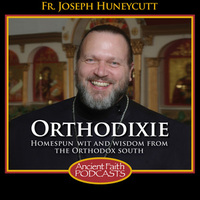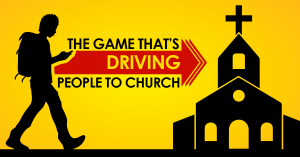 Much is made these days when Catholics and Orthodox agree or even play nice.
Much is made these days when Catholics and Orthodox agree or even play nice.
Some may ask: What happened to the unity of the Church? Was it ever united?
There are currently over 2,600 Christian groups in North America — all claiming, in one way or another, to be “the Church.” So, instead of studying the “Church of What’s Happening Now,” we must look back to the “Church of What Actually Happened” for clues, answers, the truth.
The Church originated with Jesus Christ and the Holy Spirit. Scripture tells us that on the day of Pentecost, fifty days after the Lord’s Resurrection, some 3000 souls were baptized into the Kingdom. The Faith soon spread throughout Judea, to Samaria, Antioch and the Gentiles. Within a few years after the Resurrection, there were Christian communities sprouting up all over the Roman Empire. This period of the Church’s history is recorded in the Acts and Epistles of the Apostles.
Then what? What happened to the Church after it leapt off the pages of Holy Scripture into the second century and beyond?
Persecution. For nearly 300 years the early Christians were seen as a threat to the religion and politics of the Empire. Thousands were murdered — martyred — for the Faith.
In the year 313, the Emporer Constantine granted Christians freedom of worship. Not only did this signal the end of the persecutions, it showed that the Church had survived to become, and continue to be, a significant force in the Empire.
During the next six centuries the Church determined and authorized the content of the New Testament, formalized the framework of the worship services, saw the development of theology and doctrine by great pastors and theologians known as the “Fathers” of the Church. It was also during this period that Saints Cyril and Methodius exported the Faith — which eventually made its way to the Slavs (Russia).
The fourth through the tenth centuries were also a time of struggle. The Byzantine Empire was on continual “red alert” against the Persians and Muslims. There were also many grave heresies within the Church. The greatest of these was the heresy of Arianism which taught that Christ was not truly God. This wind of error swept through the Church for centuries and is even present in some “denominations” to this day.
To battle such erroneous teachings, the Church convened councils. It was during what’s known as the Seven Ecumenical Councils that the Church, by way of refuting the heretics, also proclaimed and defended the fundamental doctrines of the Faith. Bishops from around the world gathered at these councils to affirm the authentic teachings on the Incarnation and the Holy Trinity. Instead of creating new teachings, these gatherings proclaimed what the Church always believed and taught. The conciliar spirit and collegiality expressed within these authoritative gatherings are an important aspect of Orthodoxy. Five cities were sanctioned as centers of Church organization: Rome, Constantinople, Alexandria, Antioch, and Jerusalem. Each center had its own theological style, customs, and liturgical traditions. Yet they all shared in the unity of the Faith.
The splitting of the Church into Western (Roman Catholic) and Eastern (Orthodox) which took place in the year 1054 is known as the “Great Schism“. There were many factors — political, doctrinal, economic and cultural — that fueled the division. However, two issues emerged above all others: Papal supremacy and an addition to the Creed.
The addition to the Creed, known as the Filioque (Latin for “and the Son”) affirms that the Holy Spirit proceeds from the Father and the Son. Unlike the Creed which was authenticated and affirmed by two Ecumenical Councils (Nicea in 325 & Constantinople in 381), the Filioque was added at a local council in Spain in the year 589. The King, Reccared, claimed that “the Holy Spirit also should be confessed by us and taught to proceed from the Father and the Son”. Although Kind Reccared may have meant well, his addition was not in accord with the Apostolic teaching about the Holy Spirit. The local Spanish council unfortunately agreed with his erroneous proposal.
For the East, this unilateral action (noted above and over the centuries repeated in various regions) was seen as a flagrant violation of the conciliar collegiality that was manifest and maintained by the Ecumenical Councils. It represented a major departure from the Orthodox doctrine of the One, Holy, Catholic, and Apostolic Church. [For more on the Filoque controversy go HERE.]
The other major issue that finally brought about the Great Schism was the superior claims of control and power by the bishop of Rome. Although the bishop of Rome had always been viewed as “first among equals,” he began to assert more and more unilateral and authoritarian control upon the rest of the Church. The ultimate “slap in the face” came in the year 1054 when a Cardinal, sent by the Pope, slapped a document of excommunication on the altar of the Church of Holy Wisdom in Constantinople during the Sunday worship. From then on the Western Church, centered about the Pope of Rome, and the Eastern Church, centered about the Patriarch of Constantinople, went their separate ways.
Although attempts were made in the years 1274 and 1439 to restore unity, no lasting communion was achieved. For certain, there are many factors — political, cultural, and emotional — that are involved in the continued separation of the East and West. However, the Orthodox Church believes that the two main reasons for the continued schism are the papal claims of universal jurisdiction and infallibility, as well as the addition and meaning of the Filioque to the Creed.
The centuries that followed the Great Schism saw the Western Church embroiled in the Protestant Reformation and the Roman Catholic Counter-Reformation. The Church of Rome became increasingly bogged down in political and theological problems. Martin Luther inadvertently ushered in the Reformation with his famous Ninety-Five Thesis. Though not his intention, his actions ultimately resulted in the Protestant body known as Lutherans. Hundreds of others across Western Europe also sought reform with the Church of Rome. The Reformation soon spread like a wild fire throughout the West. The Western Church’s artificial unity was replaced by massive division.
There was also trouble raging across the way in England. Henry the VIII, in the midst of marital problems, decided to replace the Pope of Rome with himself as the head of the Church. Soon, the English Church would also be torn apart by division.
Some of these Protestant bodies, such as the Lutherans and Anglicans, held on to basic forms of Liturgy and Sacraments. Others, such as the Anabaptists and their descendents rejected many biblical ideas of hierarchy, sacrament, historic tradition, and other elements of Christian practice — regardless of when and where they appeared in history — thinking that in so doing they were freeing themselves from Roman Catholicism.
Thus, even though Protestantism and Roman Catholicism can each claim to have retained portions of foundational Christianity, neither group can lay historic claim to being the one true Church of the New Testament. [No doubt, some might say similar things about the Orthodox … on their own blogs.]
We should all rejoice that steps are being made to reconcile differences and to heal this breach. Yet we must also be realistic. After centuries of separation, the way toward unity will not be an easy one. I am reminded of an old Anglican prayer: “Lord, revive Thy Church …beginning with me.” If each of us start there — with ourselves, working out our own salvation with fear and trembling — the path toward unity will be more God-pleasing. There’s much good we can all do together in the meantime. The rest is on God’s time.
For a timeline of Church History, go H E R E.
For further views on Primacy, Unity & Ecclesiology, go H E R E.
Revised from June 2005; not intended as exhaustive, nuanced, or final. Comments are moderated 🙂











